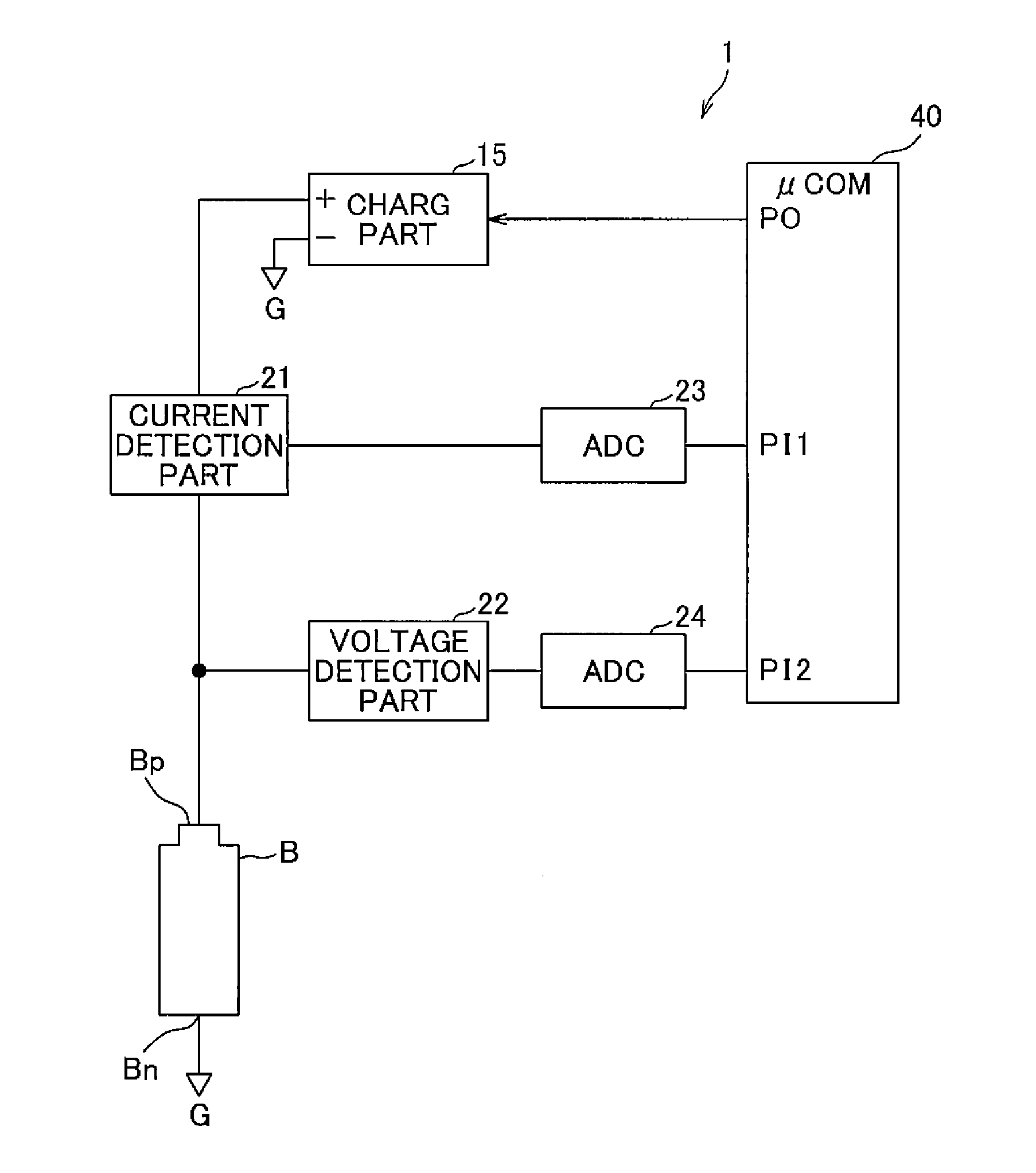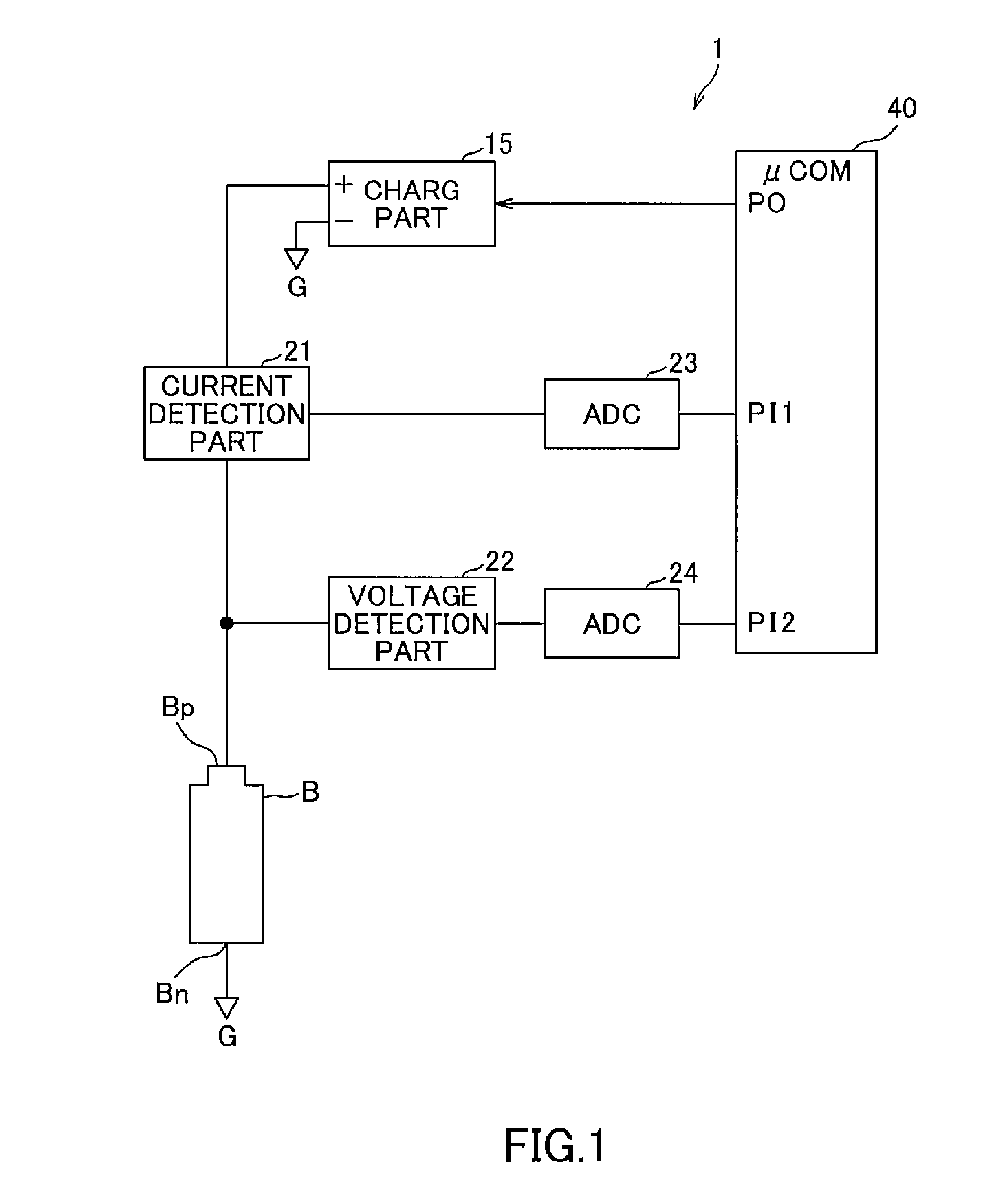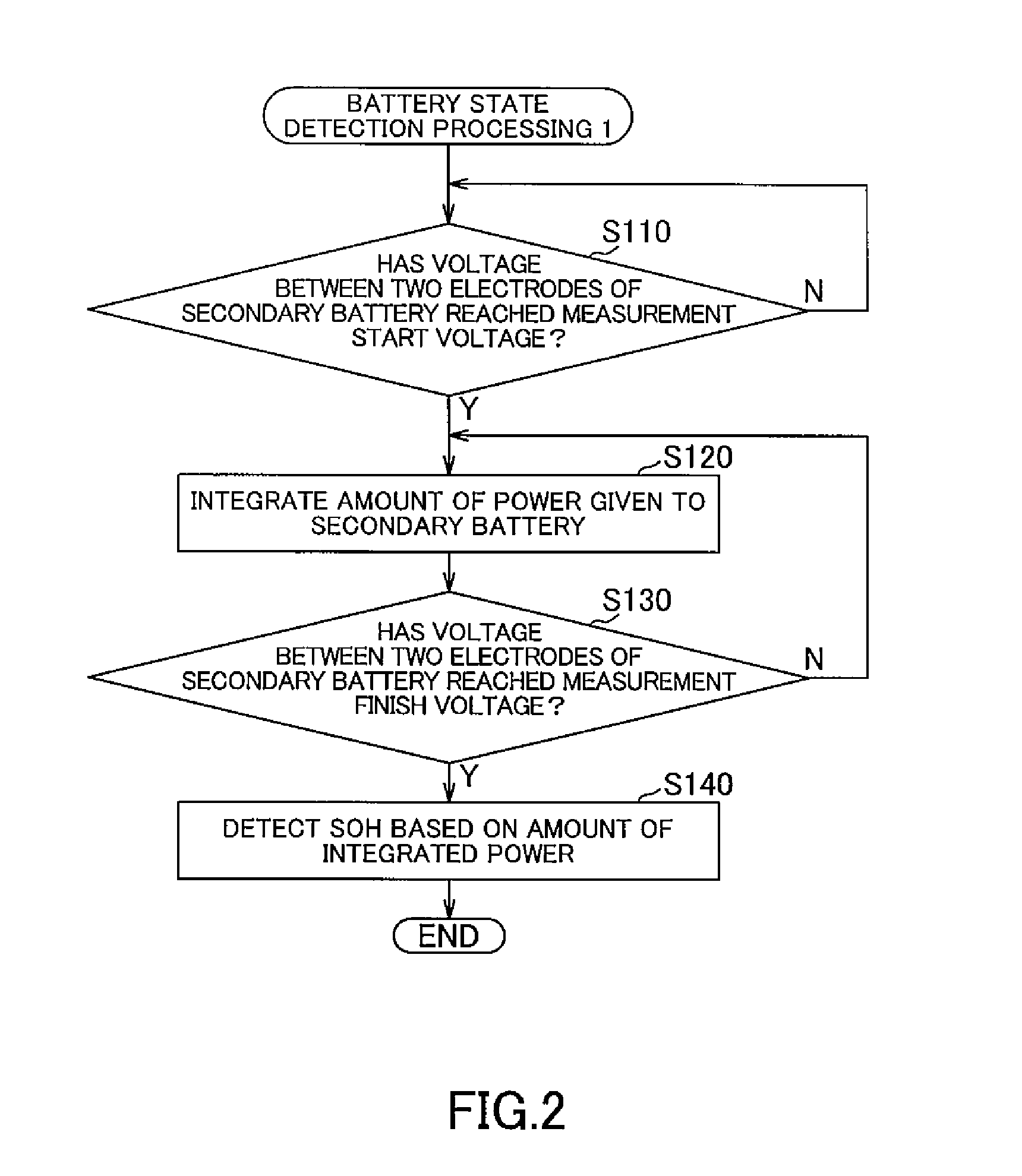Battery state detection device
a state detection and battery technology, applied in secondary battery servicing/maintenance, instruments, electrochemical generators, etc., can solve the problems of deterioration of such a secondary battery, gradual decrease of storable capacity (a current capacity, power capacity, etc., to effectively suppress the increase in manufacturing cost and device size, detect the state of the secondary battery in a shorter time, and effectively suppress the effect of increasing manufacturing cos
- Summary
- Abstract
- Description
- Claims
- Application Information
AI Technical Summary
Benefits of technology
Problems solved by technology
Method used
Image
Examples
first embodiment
[0023]Hereinafter, a battery state detection device according to a first embodiment of the present invention will e described with reference to FIGS. 1, 2.
[0024]FIG. 1 is a diagram that illustrates a schematic configuration of the battery state detection device according to the first embodiment of the present invention. FIG. 2 is a flowchart that illustrates an example of battery state detection processing 1 (power integration) executed by a CPU of a microcomputer included in the battery state detection device in FIG. 1.
[0025]The battery state detection device of the present embodiment is, for example, mounted on an electric vehicle, connected between electrodes of a secondary battery included in the electric vehicle, and detects an SOH of the secondary battery as a state of the secondary battery. Needless to say, the battery state detection device may be applied to a device, a system, or the like including a secondary battery other than the electric vehicle.
[0026]As illustrated in ...
second embodiment
[0044]Hereinafter, a battery state detection device according to a second embodiment of the present invention will be described with reference to FIG. 3.
[0045]Instead of measuring the amount of integrated power Ps given to the secondary battery B in a part of the period from the time of complete discharge to the time of full charge in the aforementioned first embodiment, the battery state detection device of the present embodiment measures an amount of integrated current Is and detects an SOH of a secondary battery B based on the amount of integrated current Is. Specifically, a device configuration of the present embodiment is the same as the aforementioned battery state detection device 1, and instead of the battery state detection processing 1 illustrated in FIG. 2, a CPU of a μCOM 40 executes battery state detection processing 2 illustrated in FIG. 3. Accordingly, in the present embodiment, description of the device configuration is omitted, and only the battery state detection p...
PUM
| Property | Measurement | Unit |
|---|---|---|
| voltage | aaaaa | aaaaa |
| voltage | aaaaa | aaaaa |
| voltage | aaaaa | aaaaa |
Abstract
Description
Claims
Application Information
 Login to View More
Login to View More - R&D
- Intellectual Property
- Life Sciences
- Materials
- Tech Scout
- Unparalleled Data Quality
- Higher Quality Content
- 60% Fewer Hallucinations
Browse by: Latest US Patents, China's latest patents, Technical Efficacy Thesaurus, Application Domain, Technology Topic, Popular Technical Reports.
© 2025 PatSnap. All rights reserved.Legal|Privacy policy|Modern Slavery Act Transparency Statement|Sitemap|About US| Contact US: help@patsnap.com



